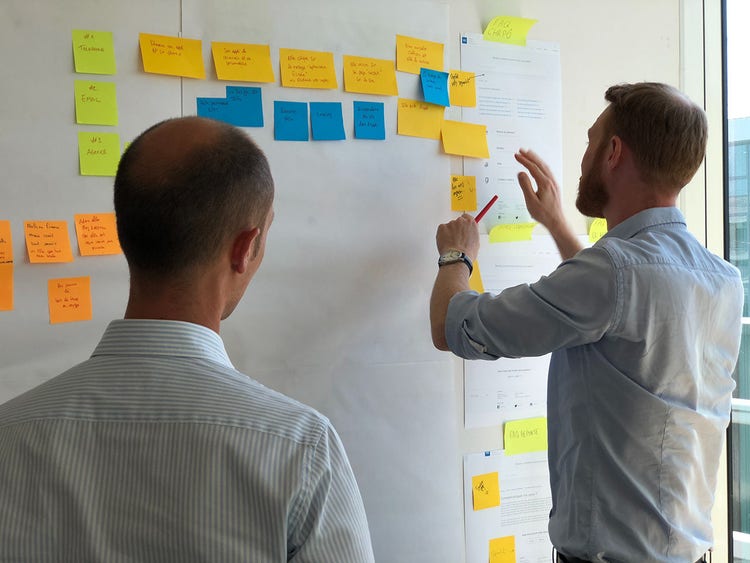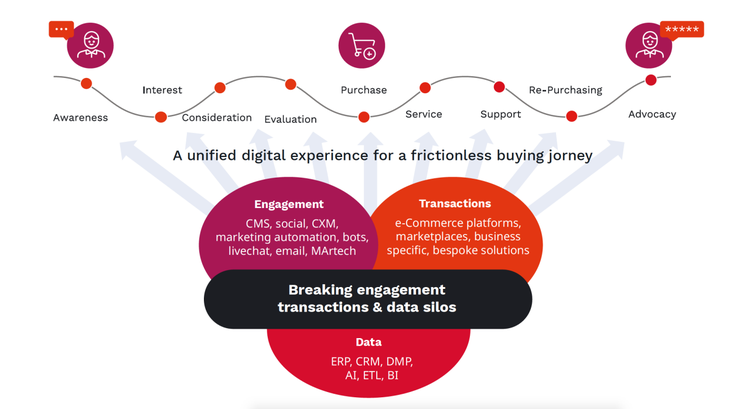Pillar 2: Mastering the Experience (B2B Digital Transformation)

A lot has been written about the need for B2B to create great customer experiences, even “delightful” experiences.
An online talk by Brian Halligan, founder of HubSpot, is unmissable for disruptors. Halligan explains how business is moving from technology disruption to experience disruption. With the technologies well-known and widely accessible, the chief differentiator is experience.
Halligan cites an experience that really is delightful. He had ordered a shirt for his dog that turned out not to fit him; Halligan needed a large instead of a medium. When he contacted chewy.com to ask for an exchange, he was told: “No, Mr Halligan, we don’t work like that. Please give your shirt to a friend, and we’ll send you a large size for free.”
This is a potent example of a disruptive experience. First, it removes the tedious obstacle of the returns process. Second, by adding value for the customer rather than extracting value from him, goodwill and loyalty go through the roof, which will translate to higher sales – and in all likelihood not just from him but from his friend too.
The returns process is a constant thorn in the side of e-commerce. In the US, Amazon has taken the dramatic step of allowing customers to return goods to one of the over 1,100 bricks and mortar outlets of Kohl’s, a rival retailer.
For experience to be disruptive, it has first to be frictionless. In its development of a seamless end-to-end buyer experience, moo.com did not want to fall at the final hurdle by making its ordering process unnecessarily complicated. Using a customer-centric technique known as “design thinking*”, the B2B disruptor worked tirelessly to distil check-out to the fewest number of clicks possible.
In e-commerce, few things are more negative than a poorly orchestrated ordering experience. Indeed, there are indications that B2B buyers are switching to cross-channel behavior not out of convenience but because the customer experience on their channel of choice is imperfect. In a recent report on the state of B2B e-commerce**, one in four buyers were looking for simpler and faster checkout, easier repeat ordering, quicker delivery, and better tracking online than is currently available to them.
These aspects of e-commerce are more straightforward to perfect in B2C where pricing is less complex, delivery (arguably) less crucial, and the customer journey the experience of a single buyer. B2B has to adopt this Customer-first approach long proven in B2C and has to become obsessed about its customers’ experiences. Its cultural resistance to digitalization seems incredible in retrospect because the innovations that have made B2C so successful are actually more relevant to B2B, not less.

Fulfillment
In B2C, we have got to the point where if the goods do not arrive immediately, consumers feel frustrated. If our bread maker or moth repellent gets to us later than expected, our lives go on as normal.
This is not the case in B2B, where late or chaotic deliveries disrupt the just-intimetable of an entire supply chain.
Delays are unavoidable. What matters to a B2B is that it knows when an order is likely to be delayed, so it can mitigate the problem and remain in control even when things go wrong. In B2C, real-time tracking avoids tantrums; in B2B, it protects your good name.
Pricing
In B2B, pricing and payment are complex, multi-tiered and highly individual and buyers are forever pressing for more favorable terms.
Integrations with the ERP system (where the contractual details of the financing terms are stored, and where inventory is monitored) enable B2B e-commerce to construct customized pricing with great precision and flexibility — complex price structures that are constantly adjusted to an accurate and real-time reading of the inventory position.
Customer experience
For many years, B2B buyers were regarded as too objective to have anything that you might call an experience.
The assumption was that business buyers always made rational decisions and could not be swayed by B2C tricks such as a great design, a coherent narrative, or even a distinct brand presence.
Content was reserved for catalog listings, or what you told customers over lunch, at trade fairs, on the phone and in endless emails. The brand was assumed to look after itself as long as the products and services offered were up to scratch.
What complicates the customer experience for B2B is that it needs to capture the hearts and minds of a chain of stakeholders, each with different priorities. The personas that populate B2C marketing connect to buyers as individuals, whereas in B2B they represent different buyer roles.
This greater complexity and very different emphasis explain why so many e-commerce tools fail to make an impact in B2B. They were developed for B2C, and then “extended” for business buyers, an environment with more complex needs.
B2B leaders know that this complexity does not make them immune to disruption. Yet it can make them slower to react to change or tie them up in process when they need to innovate. And that is a complacency no business can afford.
Photo by Bonneval Sebastien on Unsplash